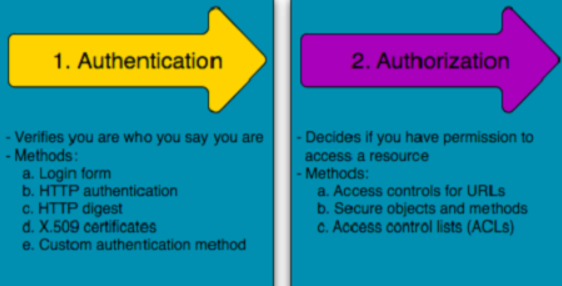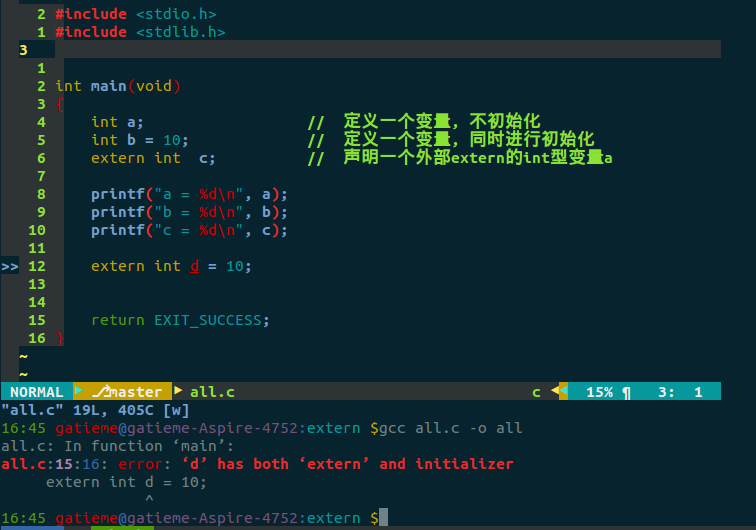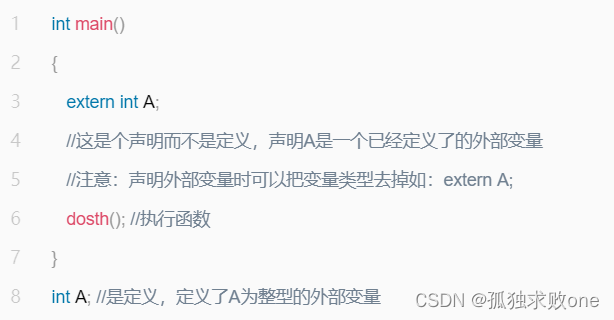一、版本使用
1、Java:17或者更高的版本。
2、springboot 3.0
3、Spring Authorization Server 1.0版本。
<dependency><groupId>org.springframework.security</groupId><artifactId>spring-security-oauth2-authorization-server</artifactId><version>1.0.0</version>
</dependency>二、OAuth2涉及的参与者
- RO (resource owner): 资源所有者,对资源具有授权能力的人。也就是登录用户。
- RS (resource server): 资源服务器,它存储资源,并处理对资源的访问请求。
- Client: 第三方应用,它获得RO的授权后便可以去访问RO的资源。
- AS (authorization server): 授权服务器,它认证RO的身份,为RO提供授权审批流程,并最终颁发授权令牌(Access Token)。
注意:为了便于协议的描述,这里只是在逻辑上把AS与RS区分开来;在物理上,AS与RS的功能可以由同一个服务器来提供服务。
三、授权服务器(authorization server)
授权服务器授权的类型有三种:授权码模式、客户端模式、刷新模式。

1、授权码模式(authorization_code)

步骤:
(A)用户访问客户端,后者将前者导向认证服务器。(B)用户选择是否给予客户端授权。(C)假设用户给予授权,认证服务器将用户导向客户端事先指定的"重定向URI"(redirection URI),同时附上一个授权码。(D)客户端收到授权码,附上早先的"重定向URI",向认证服务器申请令牌。这一步是在客户端的后台的服务器上完成的,对用户不可见。(E)认证服务器核对了授权码和重定向URI,确认无误后,向客户端发送访问令牌(access token)和更新令牌(refresh token)。参数说明:
A步骤中,客户端申请认证的URI,包含以下参数:
- response_type:表示授权类型,必选项,此处的值固定为"code"
- client_id:表示客户端的ID,必选项
- redirect_uri:表示重定向URI,可选项
- scope:表示申请的权限范围,可选项
- state:表示客户端的当前状态,可以指定任意值,认证服务器会原封不动地返回这个值。
示例:
http://localhost:9000/oauth2/authorize?response_type=code&client_id=messaging-client&scope=message.read&redirect_uri=http://127.0.0.1:8080/authorized
通过示例请求出现一个登录界面:

输入你配置的账号及密码,若是账号密码没有问题,则会返回授权码既是路径中出现code="ssssssss"。若是出现输入账号密码都没有问题,却返回账号密码相关的问题(No AuthenticationProvider found for org.springframework.security.authentication.UsernamePasswordAuthenticationToken)
此时需要查看你密码加密问题,后面配置编码器的时候会提一下。
若是路径没有返回code,则去数据库(oauth2_authorization)看看有木有出现授权码(authorization_code_value),若有直接复制。
接着根据授权码获取token,如:
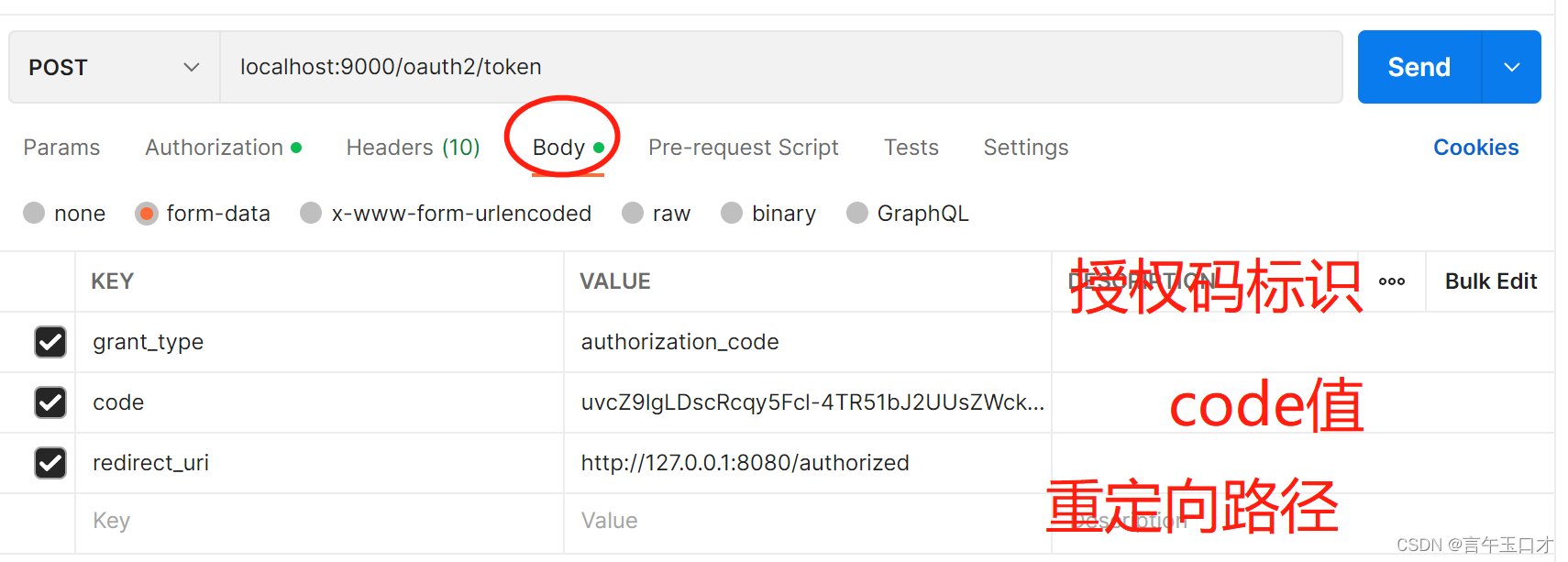
此处需要注意:需要增加客户端的配置信息(clientId、clientSecret)

最后获取:
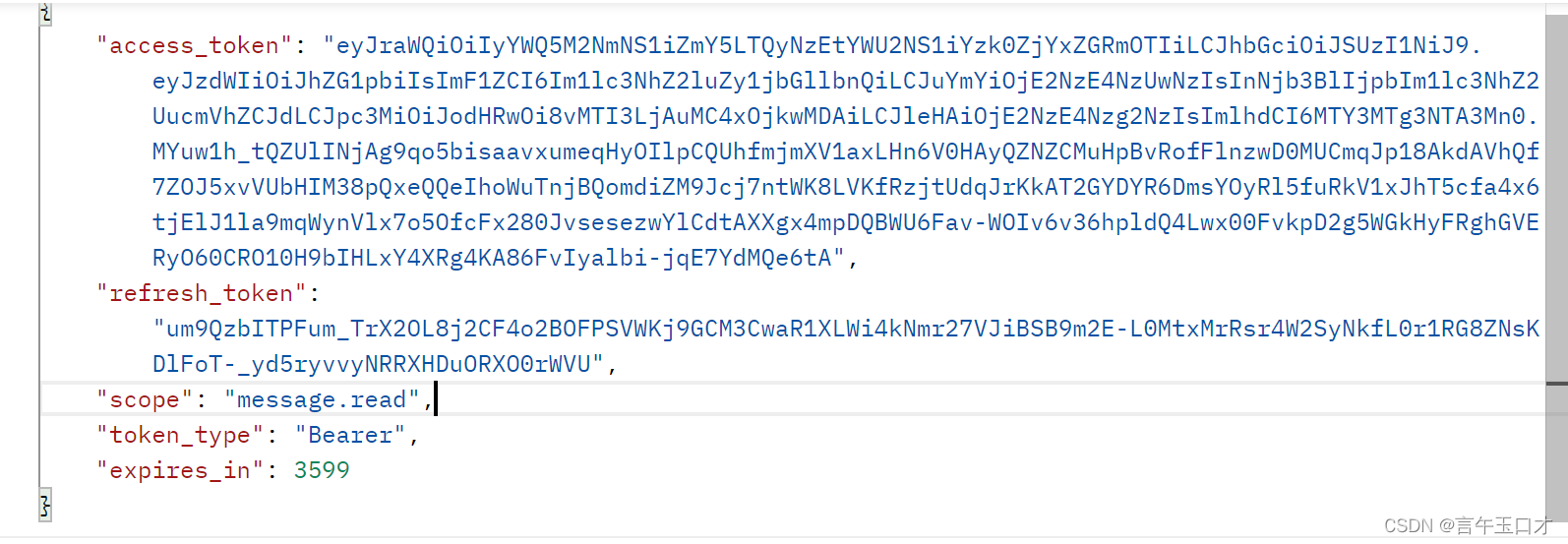
2、客户端模式(client_credentials)
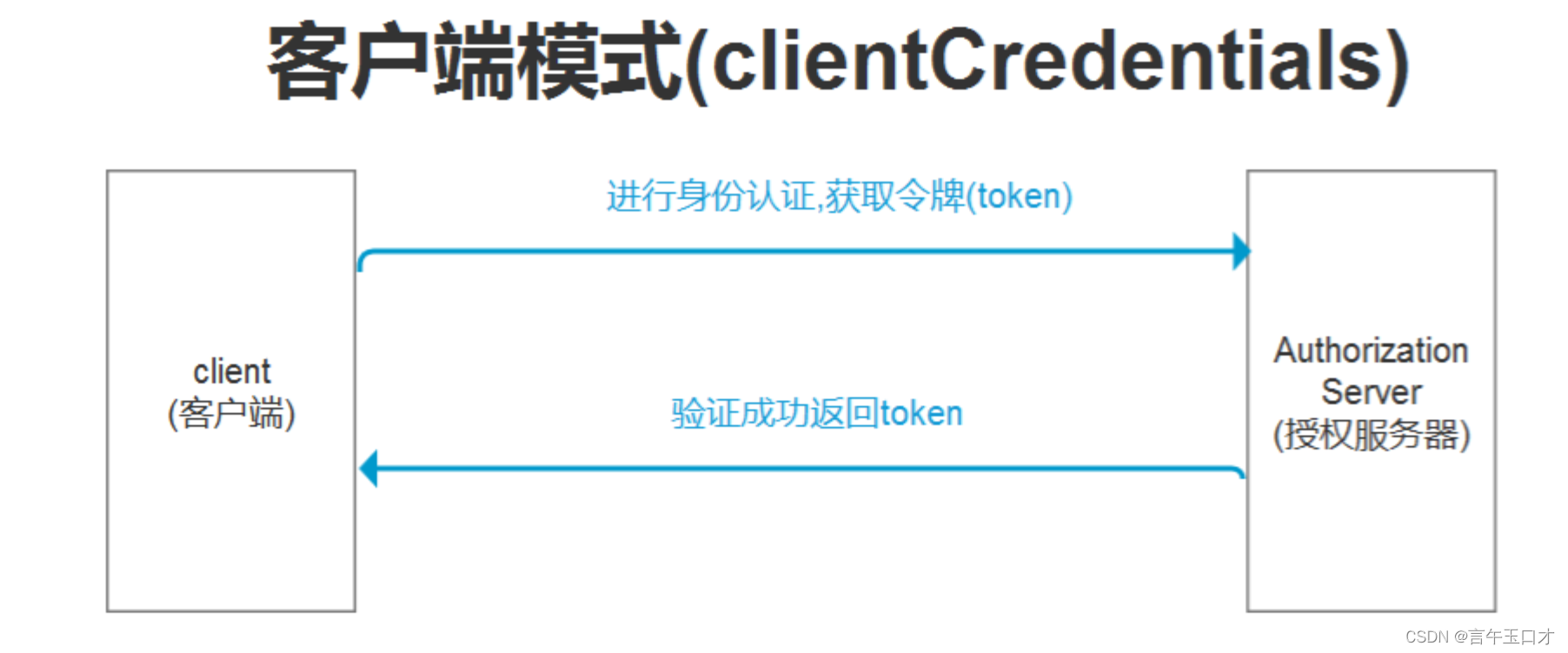
客户端模式指客户端以自己的名义,而不是以用户的名义,向服务提供商进行认证。
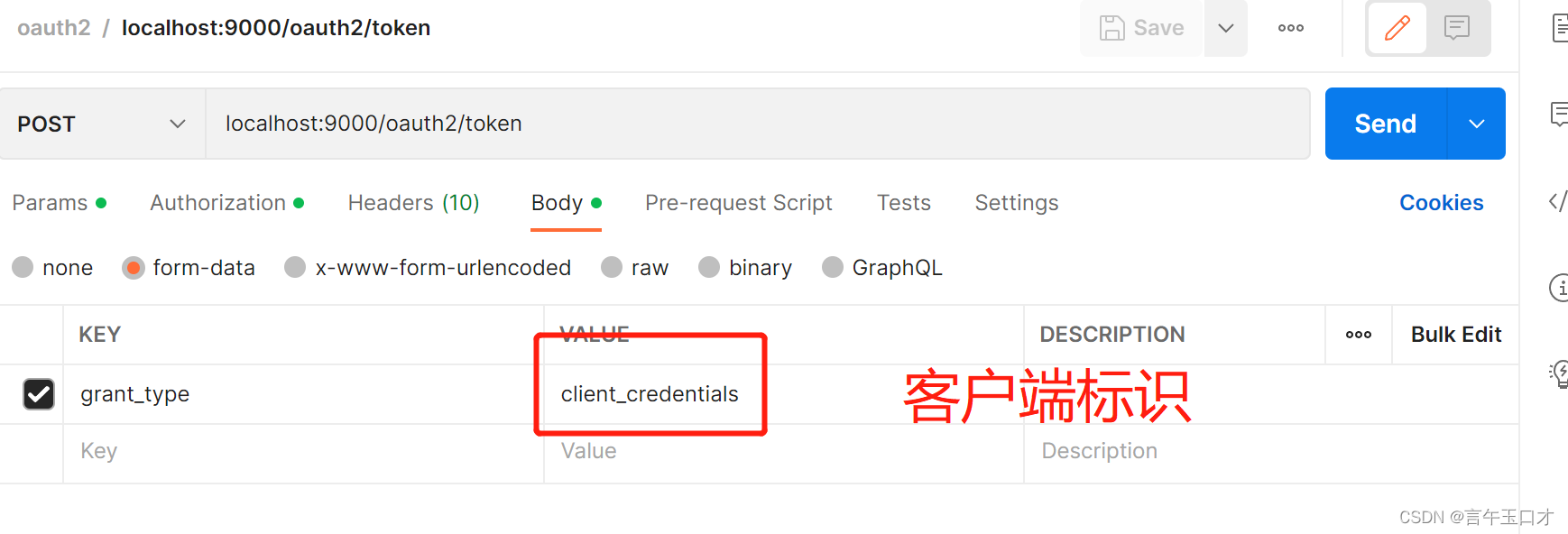
接着输入客户端配置信息:

最后得到:
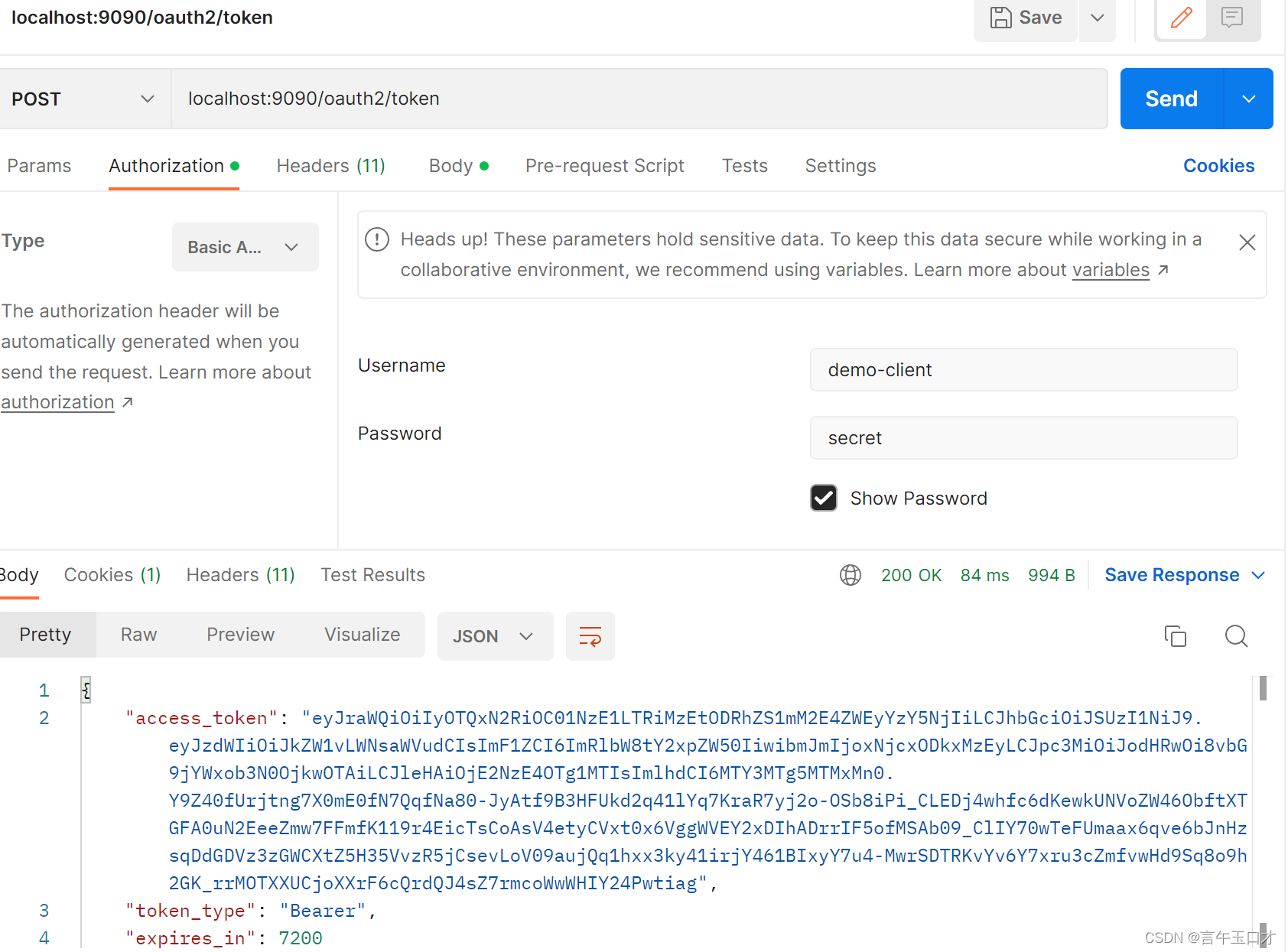
注意:客户端模式无刷新token操作。
3、刷新模式(refresh_token)
涉及参数:配置客户端信息、grant_type、refresh_token.
接着添加客户端配置信息:

最后得到:

4、授权服务器配置
AuthorizationServerConfig配置:
package com.allen.demoserver.config;import com.allen.component.redis.repository.RedisRepository;
import com.allen.demoserver.service.RedisToJdbcService;
import com.allen.demoserver.service.impl.RedisOAuth2AuthorizationConsentService;
import com.allen.demoserver.service.impl.RedisOAuth2AuthorizationService;
import com.allen.demoserver.service.impl.RedisToJdbcServiceImpl;
import com.nimbusds.jose.jwk.JWKSet;
import com.nimbusds.jose.jwk.RSAKey;
import com.nimbusds.jose.jwk.source.ImmutableJWKSet;
import com.nimbusds.jose.jwk.source.JWKSource;
import com.nimbusds.jose.proc.SecurityContext;
import org.springframework.context.annotation.Bean;
import org.springframework.context.annotation.Configuration;
import org.springframework.core.Ordered;
import org.springframework.core.annotation.Order;
import org.springframework.jdbc.core.JdbcTemplate;
import org.springframework.security.config.Customizer;
import org.springframework.security.config.annotation.web.builders.HttpSecurity;
import org.springframework.security.config.annotation.web.configurers.oauth2.server.resource.OAuth2ResourceServerConfigurer;
import org.springframework.security.oauth2.core.AuthorizationGrantType;
import org.springframework.security.oauth2.core.ClientAuthenticationMethod;
import org.springframework.security.oauth2.core.oidc.OidcScopes;
import org.springframework.security.oauth2.jose.jws.SignatureAlgorithm;
import org.springframework.security.oauth2.jwt.JwtDecoder;
import org.springframework.security.oauth2.server.authorization.JdbcOAuth2AuthorizationConsentService;
import org.springframework.security.oauth2.server.authorization.JdbcOAuth2AuthorizationService;
import org.springframework.security.oauth2.server.authorization.OAuth2AuthorizationConsentService;
import org.springframework.security.oauth2.server.authorization.OAuth2AuthorizationService;
import org.springframework.security.oauth2.server.authorization.client.JdbcRegisteredClientRepository;
import org.springframework.security.oauth2.server.authorization.client.RegisteredClient;
import org.springframework.security.oauth2.server.authorization.client.RegisteredClientRepository;
import org.springframework.security.oauth2.server.authorization.config.annotation.web.configuration.OAuth2AuthorizationServerConfiguration;
import org.springframework.security.oauth2.server.authorization.config.annotation.web.configurers.OAuth2AuthorizationServerConfigurer;
import org.springframework.security.oauth2.server.authorization.settings.AuthorizationServerSettings;
import org.springframework.security.oauth2.server.authorization.settings.ClientSettings;
import org.springframework.security.oauth2.server.authorization.settings.TokenSettings;
import org.springframework.security.web.SecurityFilterChain;
import org.springframework.security.web.authentication.LoginUrlAuthenticationEntryPoint;import java.security.KeyPair;
import java.security.KeyPairGenerator;
import java.security.interfaces.RSAPrivateKey;
import java.security.interfaces.RSAPublicKey;
import java.time.Duration;
import java.util.UUID;@Configuration(proxyBeanMethods = false)
public class AuthorizationServerConfig {@Bean@Order(Ordered.HIGHEST_PRECEDENCE)public SecurityFilterChain authorizationServerSecurityFilterChain(HttpSecurity http)throws Exception {OAuth2AuthorizationServerConfiguration.applyDefaultSecurity(http);http.getConfigurer(OAuth2AuthorizationServerConfigurer.class).oidc(Customizer.withDefaults()); // Enable OpenID Connect 1.0http// Redirect to the login page when not authenticated from the// authorization endpoint.exceptionHandling((exceptions) -> exceptions.authenticationEntryPoint(new LoginUrlAuthenticationEntryPoint("/login")))// Accept access tokens for User Info and/or Client Registration.oauth2ResourceServer(OAuth2ResourceServerConfigurer::jwt);return http.build();}/*** oauth2 用于第三方认证,RegisteredClientRepository 主要用于管理第三方(每个第三方就是一个客户端)** @return*/@Beanpublic RegisteredClientRepository registeredClientRepository(JdbcTemplate jdbcTemplate) {RegisteredClient registeredClient = RegisteredClient.withId(UUID.randomUUID().toString()).clientId("demo-client").clientSecret("{noop}secret").clientAuthenticationMethod(ClientAuthenticationMethod.CLIENT_SECRET_BASIC).authorizationGrantType(AuthorizationGrantType.AUTHORIZATION_CODE).authorizationGrantType(AuthorizationGrantType.REFRESH_TOKEN).authorizationGrantType(AuthorizationGrantType.CLIENT_CREDENTIALS).redirectUri("http://127.0.0.1:8080/login/oauth2/code/demo-client-oidc").redirectUri("http://127.0.0.1:8080/authorized").scope(OidcScopes.OPENID).scope(OidcScopes.PROFILE).scope("message.read").scope("message.write").clientSettings(ClientSettings.builder()//client端请求 jwt解密算法.jwkSetUrl("http://localhost:9090/oauth2/jwks").requireAuthorizationConsent(true).build()).tokenSettings(TokenSettings.builder()//使用透明方式,默认是 OAuth2TokenFormat SELF_CONTAINED,生成 JWT 加密方式// SELF_CONTAINED 生成 JWT 加密方式
// .idTokenSignatureAlgorithm(SignatureAlgorithm.RS256)
// .accessTokenFormat(OAuth2TokenFormat.SELF_CONTAINED).authorizationCodeTimeToLive(Duration.ofHours(1)).accessTokenTimeToLive(Duration.ofHours(2)).refreshTokenTimeToLive(Duration.ofHours(3)).reuseRefreshTokens(false).build()).build();// Save registered client in db as if in-memoryJdbcRegisteredClientRepository registeredClientRepository = new JdbcRegisteredClientRepository(jdbcTemplate);if (null == registeredClientRepository.findByClientId("demo-client")){registeredClientRepository.save(registeredClient);}return registeredClientRepository;}
// @Bean
// public RedisToJdbcService redisToJdbcService(JdbcTemplate jdbcTemplate, RegisteredClientRepository registeredClientRepository) {
// return new RedisToJdbcServiceImpl(jdbcTemplate, registeredClientRepository);
// }
// @Bean
// public OAuth2AuthorizationService authorizationService(RegisteredClientRepository registeredClientRepository,RedisRepository redisRepository
// ,RedisToJdbcService redisToJdbcService) {
// return new RedisOAuth2AuthorizationService(registeredClientRepository,redisRepository,redisToJdbcService);
// }@Beanpublic OAuth2AuthorizationService authorizationService(JdbcTemplate jdbcTemplate, RegisteredClientRepository registeredClientRepository) {return new JdbcOAuth2AuthorizationService(jdbcTemplate, registeredClientRepository);}@Beanpublic OAuth2AuthorizationConsentService authorizationConsentService(JdbcTemplate jdbcTemplate, RegisteredClientRepository registeredClientRepository) {return new JdbcOAuth2AuthorizationConsentService(jdbcTemplate, registeredClientRepository);}
// @Bean
// public OAuth2AuthorizationConsentService authorizationConsentService(RedisRepository redisRepository, RedisToJdbcService redisToJdbcService) {
// return new RedisOAuth2AuthorizationConsentService(redisRepository,redisToJdbcService);
// }/*** 用于给access_token签名使用。** @return*/@Beanpublic JWKSource<SecurityContext> jwkSource() {KeyPair keyPair = generateRsaKey();RSAPublicKey publicKey = (RSAPublicKey) keyPair.getPublic();RSAPrivateKey privateKey = (RSAPrivateKey) keyPair.getPrivate();RSAKey rsaKey = new RSAKey.Builder(publicKey).privateKey(privateKey).keyID(UUID.randomUUID().toString()).build();JWKSet jwkSet = new JWKSet(rsaKey);return new ImmutableJWKSet<>(jwkSet);}private static KeyPair generateRsaKey() {KeyPair keyPair;try {KeyPairGenerator keyPairGenerator = KeyPairGenerator.getInstance("RSA");keyPairGenerator.initialize(2048);keyPair = keyPairGenerator.generateKeyPair();}catch (Exception ex) {throw new IllegalStateException(ex);}return keyPair;}@Beanpublic JwtDecoder jwtDecoder(JWKSource<SecurityContext> jwkSource) {return OAuth2AuthorizationServerConfiguration.jwtDecoder(jwkSource);}/*** 配置Authorization Server实例* @return*/@Beanpublic AuthorizationServerSettings authorizationServerSettings() {return AuthorizationServerSettings.builder().build();}}
配置说明:
- authorizationServerSecurityFilterChain : 关于Protocol Endpoints.(协议端点)配置
- registeredClientRepository: 关于客户端的一些配置
- authorizationService: 关于OAuth2Authorization 授权信息的处理
- authorizationConsentService: 关于OAuth2AuthorizationConsent信息的处理(入库)
- jwkSource()、generateRsaKey()、jwtDecoder: 关于token生成规则的处理
- authorizationServerSettings: 关于AuthorizationServerSettings【授权服务器】的配置,含路径及接口。
注意:authorizationService、authorizationConsentService 目前框架提供InMemoryOAuth2AuthorizationService(内存)、JdbcOAuth2AuthorizationService(数据库)。若需要实现Redis存储,需要自己去实现OAuth2AuthorizationService接口。关于redis的实现,可以项目看源码。
DefaultSecurityConfig配置:
package com.allen.demoserver.config;import com.nimbusds.jose.jwk.JWKSet;
import com.nimbusds.jose.jwk.RSAKey;
import com.nimbusds.jose.jwk.source.ImmutableJWKSet;
import com.nimbusds.jose.jwk.source.JWKSource;
import com.nimbusds.jose.proc.SecurityContext;
import org.springframework.context.annotation.Bean;
import org.springframework.context.annotation.Configuration;
import org.springframework.core.annotation.Order;
import org.springframework.security.config.Customizer;
import org.springframework.security.config.annotation.web.builders.HttpSecurity;
import org.springframework.security.config.annotation.web.configuration.EnableWebSecurity;
import org.springframework.security.core.userdetails.User;
import org.springframework.security.core.userdetails.UserDetails;
import org.springframework.security.core.userdetails.UserDetailsService;
import org.springframework.security.crypto.bcrypt.BCryptPasswordEncoder;
import org.springframework.security.crypto.factory.PasswordEncoderFactories;
import org.springframework.security.crypto.password.PasswordEncoder;
import org.springframework.security.oauth2.core.AuthorizationGrantType;
import org.springframework.security.oauth2.core.ClientAuthenticationMethod;
import org.springframework.security.oauth2.core.oidc.OidcScopes;
import org.springframework.security.oauth2.server.authorization.client.InMemoryRegisteredClientRepository;
import org.springframework.security.oauth2.server.authorization.client.RegisteredClient;
import org.springframework.security.oauth2.server.authorization.client.RegisteredClientRepository;
import org.springframework.security.provisioning.InMemoryUserDetailsManager;
import org.springframework.security.web.SecurityFilterChain;
import org.springframework.security.web.authentication.LoginUrlAuthenticationEntryPoint;import java.security.KeyPair;
import java.security.KeyPairGenerator;
import java.security.interfaces.RSAPrivateKey;
import java.security.interfaces.RSAPublicKey;
import java.util.UUID;/*** @author xuguocai* @date 2022/12/13 21:55**/
@EnableWebSecurity
@Configuration(proxyBeanMethods = false)
public class DefaultSecurityConfig {/*** 这个也是个Spring Security的过滤器链,用于Spring Security的身份认证。* @param http* @return* @throws Exception*/@Bean@Order(2)public SecurityFilterChain defaultSecurityFilterChain(HttpSecurity http)throws Exception {http.authorizeHttpRequests((authorize) -> authorize.anyRequest().authenticated())// Form login handles the redirect to the login page from the// authorization server filter chain.formLogin(Customizer.withDefaults());return http.build();}/*** 配置用户信息,或者配置用户数据来源,主要用于用户的检索。* @return*/@BeanUserDetailsService users() {UserDetails user = User.withDefaultPasswordEncoder().username("user1").password("123456").roles("USER").build();return new InMemoryUserDetailsManager(user);}public static void main(String[] args) {BCryptPasswordEncoder bCryptPasswordEncoder = new BCryptPasswordEncoder();String encode = bCryptPasswordEncoder.encode("123456");System.out.println(encode);}
}
配置说明:
defaultSecurityFilterChain:关于过滤器链的验证配置。 users():关于UserDetailsService 的实现,此处密码基于源码默认PasswordEncoder处理。

注意:基于代码学习,可以使用默认的编码器,既是如上配置方式。若是接口的实现,需要注意引入的编码器对密码的加密。若是配置的编码器出现问题,会影响授权码获取code。
package com.allen.demoserver.service;import lombok.extern.slf4j.Slf4j;
import org.springframework.beans.factory.annotation.Autowired;
import org.springframework.security.core.authority.AuthorityUtils;
import org.springframework.security.core.userdetails.User;
import org.springframework.security.core.userdetails.UserDetails;
import org.springframework.security.core.userdetails.UserDetailsService;
import org.springframework.security.core.userdetails.UsernameNotFoundException;
import org.springframework.security.crypto.password.PasswordEncoder;/*** @author xuguocai* @date 2022/11/24 17:06**/
@Slf4j
@Service
public class UserDetailsServiceImpl implements UserDetailsService {@Autowiredprivate UserClient userClient;// 需要注入 new BCryptPasswordEncoder(),既是自己定义这个bean@Autowiredprivate PasswordEncoder passwordEncoder;/*** 基于用户名获取数据库中的用户信息* @param username 这个username来自客户端* @return* @throws UsernameNotFoundException*/@Overridepublic UserDetails loadUserByUsername(String username)throws UsernameNotFoundException {log.info("loadUserByUsername {}",username);//基于feign方式获取远程数据并封装//1.基于用户名获取用户信息UserVO data = userClient.selectUserByUserName(username);if(data==null) {throw new UsernameNotFoundException("用户不存在");}//2.基于用于id查询用户权限String password = passwordEncoder.encode(data.getPassword());
// log.info("数据:{}",data);//3.对查询结果进行封装并返回return new User(username, password,AuthorityUtils.commaSeparatedStringToAuthorityList("ROLE_ADMIN"));//返回给认证中心,认证中心会基于用户输入的密码以及数据库的密码做一个比对}}
在配置中,需要注入上面的bean:
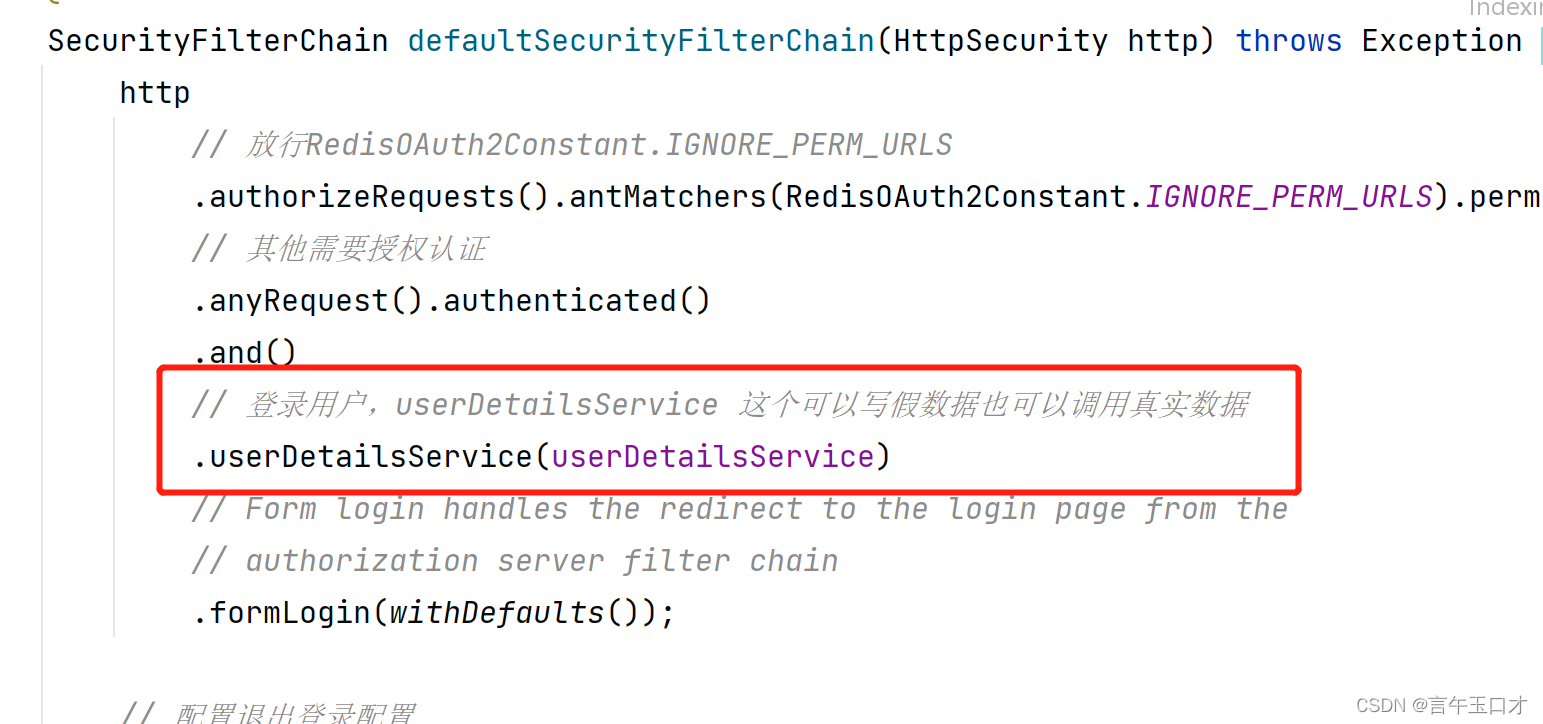
此处需要注意编码器的注入,配置不当会影响授权码的账号密码输入,获取不到code值。
至此,授权服务器配置完毕。需要拓展的根据自己的需求拓展。
四、资源服务器(resource-server)与客户端(oauth2-client)
<dependency><groupId>org.springframework.boot</groupId><artifactId>spring-boot-starter-oauth2-resource-server</artifactId></dependency>此处不再描述,可以查看oauth2-resource 项目,关注它的配置类、配置文件,其次再关注获取全局用户方式。
获取全局用户:它是根据jwt token获取,传的token经过过滤器链,既是【securityFilterChain(HttpSecurity http)】配置,最后从token中获取用户信息。
文章对应的源码地址:gc-oauth2项目
参考地址:
Spring Authorization Server 官网
Spring Authorization Server 官网示例
OAuth 2.0之授权码模式









